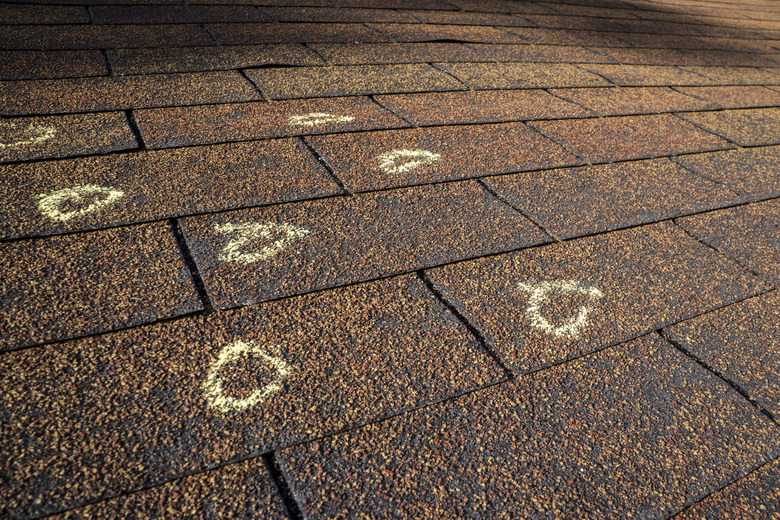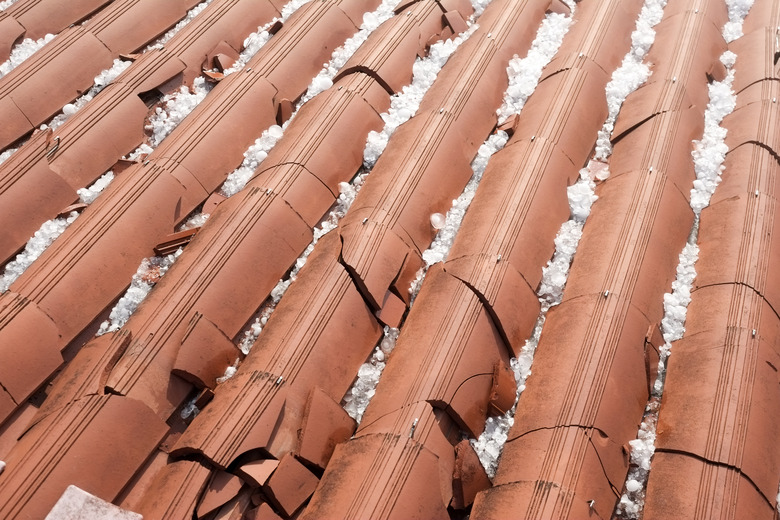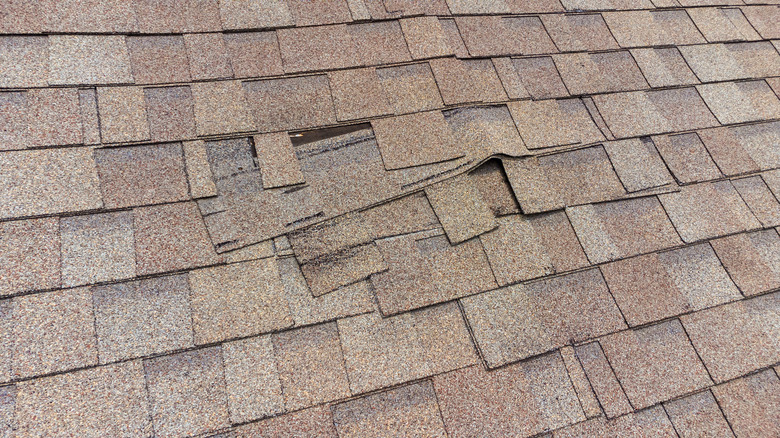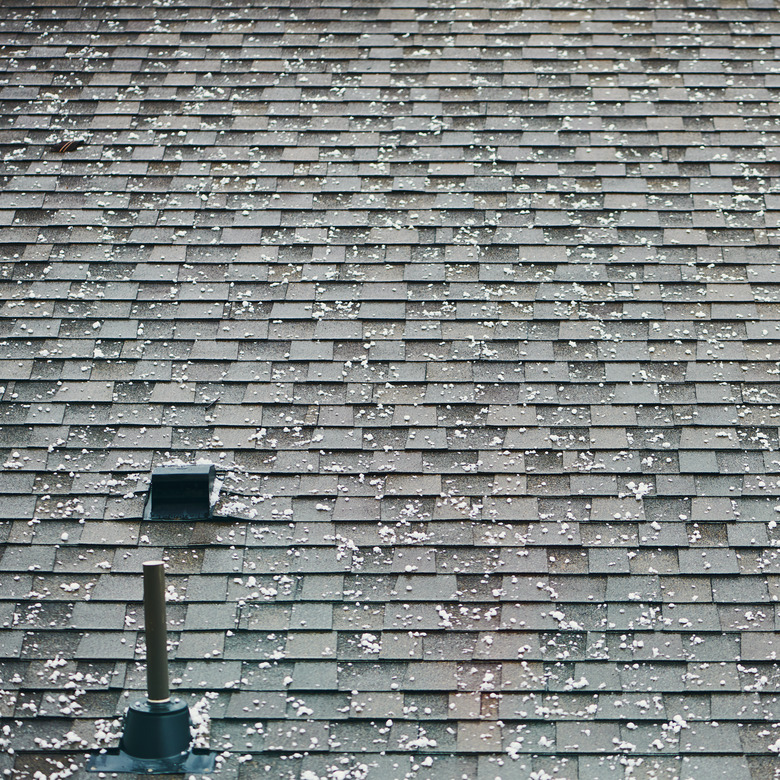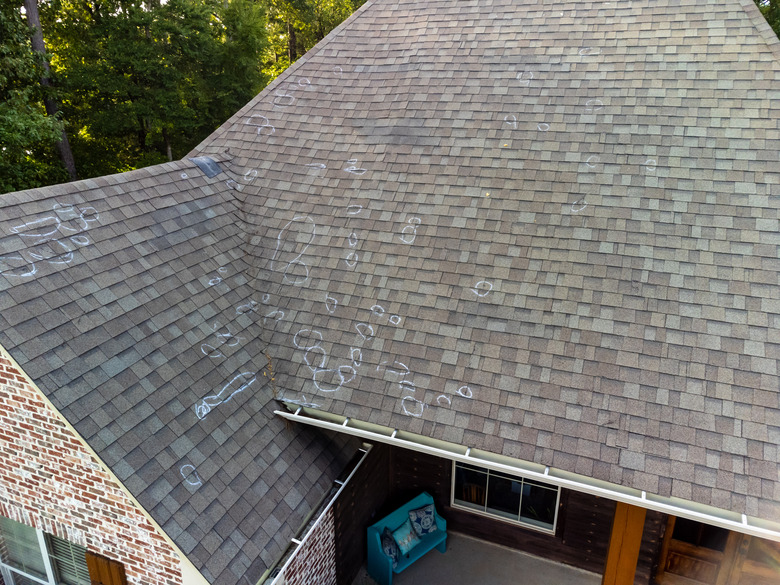How To Find And Repair Hail Damage On The Roof
We may receive a commission on purchases made from links.
Hail damage is a potentially serious but often overlooked roofing problem. How serious? A hail storm can crack wood shingles and remove the protective mineral coating from asphalt shingles, causing leaks. It's serious enough that most major roofing manufacturers have developed impact-resistant shingles specifically designed to resist hail damage, and some insurance companies offer discounts when those products are used.
So, how do you know you've had hail damage after a storm — and, most importantly, what can you do about it?
How (and Where) Hail Damages
How (and Where) Hail Damages
Hail forms during thunderstorms when the updraft from the storms pulls water droplets into the upper atmosphere, where they freeze. The hailstone grows as more water collides with it and freezes. Hailstones can range in size from 1/4 inch in diameter, about the size of a pea, to 4 1/2 inches, the size of a grapefruit. They eventually fall when they become too heavy to be supported by the updraft.
Meteorologists like to compare hail to everyday objects, like peas, marbles, softballs, and grapefruits. It's a folksy practice, but it can be disquieting, especially when you imagine a chunk of ice the size of a softball falling toward your roof at 75 to 100 miles per hour.
Some areas get more hail storms than others. The area where Wyoming, Colorado, and Nebraska meet is called "hail alley" by the National Weather Service. The entire corridor from Alberta, Canada south to Texas has the potential for severe hail storms. It's important to realize that any thunderstorm can produce hail, so hail damage (and all of the dings, roof replacements and roof leaks that come along with it) is a possibility everywhere.
Finding Hail Damage
Finding Hail Damage
Hail affects different roofing materials in different ways, and sometimes, a damaged roof may not develop a leak until much later. So, it is important to identify potential signs of hail damage before it becomes a costly problem.
How do you do this exactly? First, start on the ground. Dents in gutters, downspouts, siding, metal window frames, and air conditioner condensers mean there could be problems on the roof as well.
You may be able to survey the roof from the ground using binoculars, or you can climb a ladder and survey the damage from the edge of the roof. There are ladder standoffs and stabilizers to keep the ladder steady. If you do spot damage from the ladder, you will need to take a closer look so that you can document it for an insurance claim. Most homeowners' insurance policies cover hail damage.
If you don't want to walk on the roof yourself, it is best to hire a roofing contractor. Because hail damage often leads to filing an insurance claim, look for a roofer who has experience dealing with hail damage and insurance companies.
Types of Hail Damage
Types of Hail Damage
Although you might not think it, there are actually different types of hail damage. Hail can crack and split wood shakes and shingles, but the damage on asphalt shingles may be a little less obvious.
A roof with asphalt shingles hit by hailstones may suffer indentations that weaken the shingles. In many cases, the hail will dislodge the protective coating of mineral granules. This may not seem like a big deal, but the coating protects the underlying asphalt — the material that makes the shingle waterproof — from exposure to the sun's ultraviolet rays, which can degrade the asphalt. The hit may appear shiny and may be a little soft to the touch.
On a tile roof, hail damage can take the more obvious form of cracked and broken tiles. Hailstones can also dent a metal roof. Even rock-hard slate tiles can be cracked, and because slate is a natural stone that is composed of layers, the hail damage could cause a layer of the stone to be missing. And it is not just the roofing material that can be damaged — metal vent covers and flashing can also be dented by hail.
Bottom line? If you see any hail damage, make note of it. Use chalk to circle the hits and take photographs of the area. Take close-up photos of the hail damage and photos that show whole roof sections. Note that you simply can't have too many photos. They will help support your case with the insurance company.
This is where the services of a roofing contractor come in handy. They can spot damage you may miss, and give a general estimate of what it will cost for roof repair.
Hail Damage Insurance Claims
Hail Damage Insurance Claims
If it makes sense to file an insurance claim because it will cost more than your deductible to repair the damage, contact your homeowners insurance company. You often have up to a year to file a claim but check your policy for specifics.
Don't make any repairs until you contact your insurance company. Some companies let you file online, or you may have to contact an agent. In either case, have your insurance policy number handy as well as a description of the damage.
The insurance company will send out an insurance adjuster to inspect the damage. At this point, you can provide the adjuster with your photos of the damage. Have your roofing contractor present at the inspection. The contractor is the expert here, and they can discuss sticking points with the adjuster. The insurance company will use the adjuster's report to process the claim.
Your roof may require only spot repairs, or the entire roof may need to be replaced. The type of policy you have will determine the amount you receive. A policy that covers replacement costs will pay the current rate for labor and materials, but a cash value policy will take the age of the roof into consideration when calculating the payout. Unfortunately, an older roof will decrease the amount you receive from the insurance company.
The Fine Print
The Fine Print
Be aware that some policies contain cosmetic exclusions, especially for homes in hail-prone areas. Basically, the exclusion makes it possible for insurance companies to avoid paying for damage that it believes affects only the appearance of the material but not its function. This is a gray area that is open to interpretation, so it is important to learn just what your homeowners' insurance policy does and does not cover.
Some companies include the cosmetic exclusion in all of its policies. Others offer policy holders a credit that reduces the premiums if the exclusion is included.
There are policies that require a separate deductible for hurricane and wind damage, which includes hail damage. In many states susceptible to hurricanes or damage from high winds and hail, the separate deductible is mandatory. Rather than paying a fixed deductible of $500 or $1,000 per claim, the hurricane deductible is usually 1 to 5 percent of the insured value of the house.
Be sure you understand your homeowners' insurance policy. Some companies offer a discount for impact-resistant asphalt shingles, which may be a good choice for your next re-roofing project if you live in a hail-prone area.
